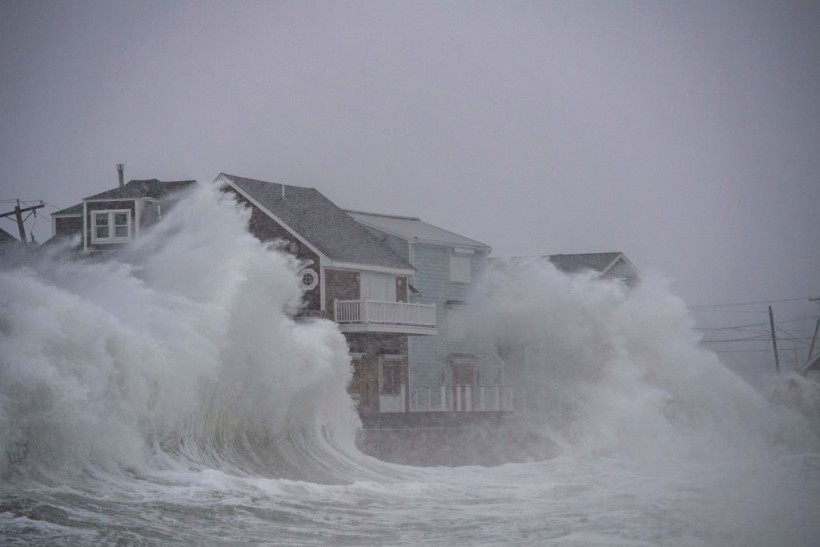A Nor'easter is developing off the Atlantic Coast, with a trajectory aiming at Boston and the New England region of the northeastern United States, according to a weather forecast.
The winter storm is set to bring rain showers, wet snow, and cause icy conditions with cold temperatures across the region by early next week.
During this period, regional travel disruption is possible with potential power outages.
Nor'easter Forecast

The Nor'easter is robust storm caused by a massive low-pressure system.
The storm will arrive into the US and could also impact southeastern Canada.
This will transpire several weeks after a powerful bomb cyclone or winter hurricane wreaked havoc across the Northeast, especially in Buffalo, New York, where it killed multiple people.
The season is far from over and meteorologists are expecting more winter storms.
AccuWeather meteorologists assert that the growing storm off the Atlantic coast would bring the said weather hazards to parts of eastern New England starting Monday, January 16.
The storm will take shape hundreds of miles of the coasts of Delaware, New Jersey, and Virginia from late Saturday, January 14.
Also Read: Watch The Birth of Juno, a Major Nor'easter [VIDEO]
What is a Nor'easter?
Nor'easter storms sometime plague the Northeast US at any time of the year.
However, US meteorologists estimated that these weather phenomena are common between September and April, a period just right before and after the winter season, which spans between December and February.
The Northeast and other areas along the East Coast of North America are the initial impact points of these storms, which commonly develops over the Atlantic Ocean.
The said storm got its name "Nor'easter" since is forms in the northeastern region and it pertains to winds that come from the northeast.
Historical Nor'easters
According to the National Weather Service (NWS), some of the well known Nor'easters in history include the following:
- Blizzard of 1888
- Ash Wednesday storms of March 1962
- New England Blizzard of February 1978
- March 1993 Superstorm
- Boston snowstorms of January 2015 and February 2015
Nor'easters in the past were responsible for leaving damage worth billions of US dollars, severe economic degradation, and transportation and human disruption, as well as disastrous coastal flooding in some cases, the NWS said.
How Do Nor'easters Form?
In the US, the most-impact region where there is a heavy population is between Boston, New York City, Philadelphia, Washington, D.C., and the Interstate 95 or I-95 Corridor, the US weather agency adds.
This assessment is possible since the US East Coast is an ideal breeding ground for Nor'easters.
During winter, the polar jet stream transports cold Arctic air in a southward direction cross the plains of Canada and the US.
In addition, it pushes air eastward into the Atlantic Ocean where warm air from the Gulf of Mexico and the Atlantic attempt to move northward.
The gulf's warm waters help maintain the coast waters to be mild during the winter, which also helps warm the cold winter air over the water.
The temperature difference between the air over the water and Arctic air over the land fuels the generation of Nor'easters, the agency explained.
Related Article: Nor'easter: Late-Season Winter Storm to Hit New England, Appalachians; Extreme Cold Weather Expected
© 2024 NatureWorldNews.com All rights reserved. Do not reproduce without permission.



![Roundworms with Short Memories 'Stop Forgetting' When Frozen or Given Lithium [Study]](https://1471793142.rsc.cdn77.org/data/thumbs/full/70295/280/157/50/40/roundworms-with-short-memories-stop-forgetting-when-frozen-or-given-lithium-study.jpg)

